The biggest entertainment stories
Get our big stories about Hollywood, film, television, music, arts, culture and more right in your inbox as soon as they publish.
You may occasionally receive promotional content from the Los Angeles Times.
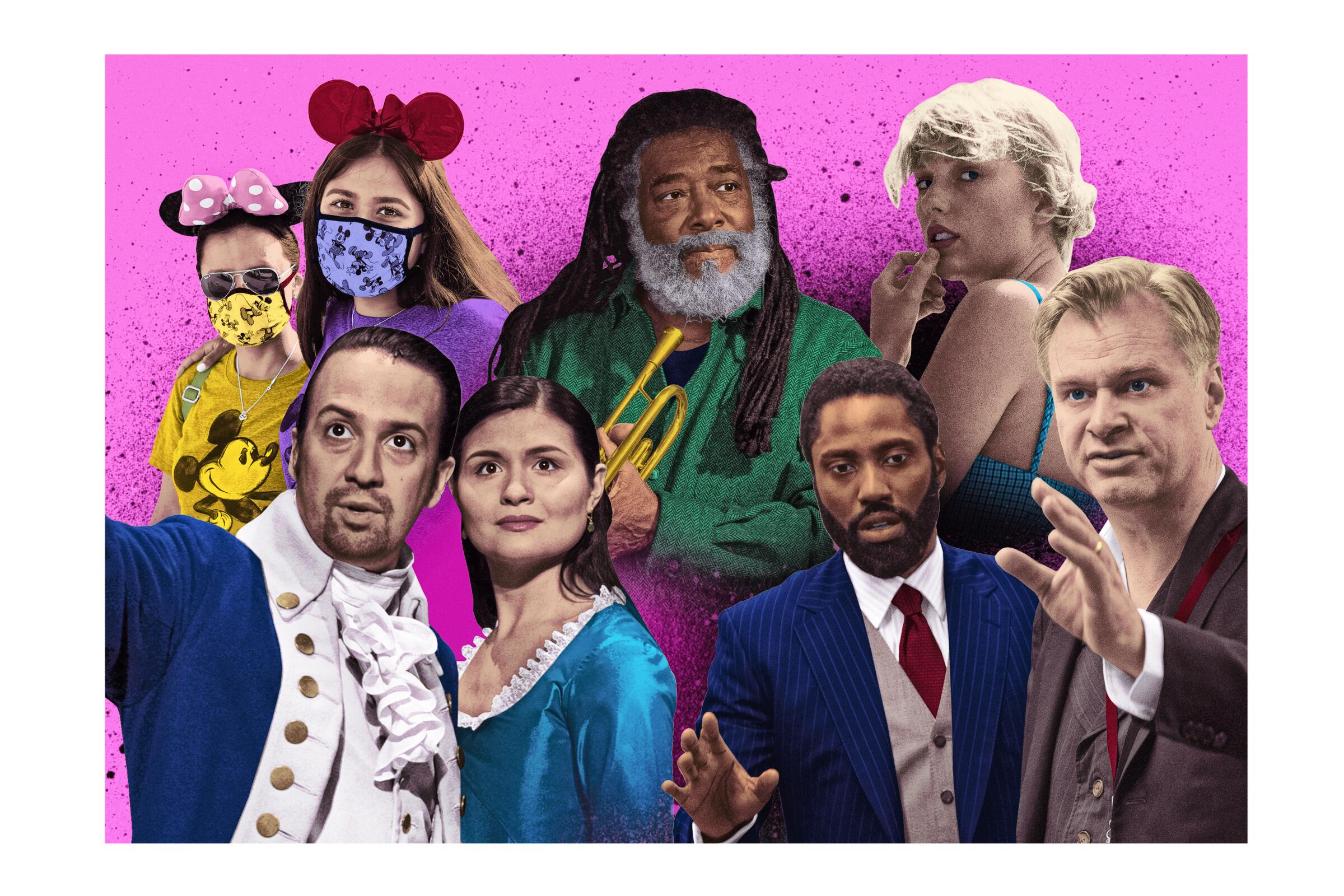
COVID-19 has taken a terrible toll in 2020, with more than 1.6 million lives lost worldwide, untold financial pain, and unfathomable anxiety and stress. The losses have decimated our cultural and entertainment institutions as well. Artists of all disciplines have readjusted their ways of working, and many are left wondering whether they will have the wherewithal or spirit to continue their craft even after the pandemic abates. Yet with the losses we’ve also seen resilience and creativity that have led to new ways of experiencing culture. As 2020 comes to a close, our critics and writers look back on what we’ve lost and found in our cultural lives.
—Laurie Ochoa, Sunday Calendar editor
By MARY McNAMARA
Culture Columnist and Critic

We appreciated works of art for their own sake, rather than their often overpowering context of place, event and travel.
WHAT WILL WE remember when we look back on 2020?
At the moment, it seems impossible that this year will ever be anything other than tragicomedic shorthand for every disaster known to humanity save an enormous asteroid destroying half the world — a year in which a comment like that prompts even very reasonable people to quickly Google “asteroids close to Earth.”
But quite soon, the 21st year of the second millennium will be history, and with luck, science, good leadership and a motivated populace, the pandemic of 2020-21 too will fade, first into memory, then into communal mythology and finally into textbooks, museums, documentaries and history tests.
There will indeed come a time when the smell of hand sanitizer will no longer be an emotional trigger and the parking lot at Dodger Stadium will be filled with baseball fans rather than COVID-19 test sites. A time when film critics once again kvetch about young people texting in the theater, when mothers moan about the ridiculous number of birthday parties an average kindergartener is expected to attend, kids whine about another boring trip to the museum and restaurant servers grouse over the time-honored fact that the customers with the most special requests are always the worst tippers. READ FULL STORY
By DANIEL HERNANDEZ
Staff Writer

Every human being who is aware of the pandemic ... can say that they are sharing something — waiting for the end of this.
LATELY, I’VE come to realize that the pandemic is the first panhuman event in this planet’s history or certainly in our lifetimes. How? Through globalization and technology, virtually every sentient human from a child of 3 to elders in triple-digit age brackets knows that COVID-19 is happening.
In that sense we’ve found something — finally — that unites us all, from the most remote villages to the most concentrated big cities, such as ours. The pandemic has reached deep into the Amazon, where it’s taking a devastating toll on the Yanomami, and even to tiny South Pacific islands.
For many years, we thought the internet would in some way unite all humans. But more than anything else it has largely succeeded in dividing us into minute tribes; the most dystopian version of the web has won out over the most hopeful or congealing. The nearest events you could say approximate what we are experiencing now are the terror attacks of Sept. 11, 2001 — but it would be woefully naive to conclude that people in Fiji or the depths of Siberia would have the same emotional reactions to 9/11 as we did as Americans. No, 9/11 didn’t bind the planet.
It took 2020 to do that. READ FULL STORY
By JUSTIN CHANG
Film Critic
What hasn’t been lost — what has, in fact, been as ripe for discovery as ever — is an enormous swath of movies good and great, old and new.
THERE’S A MOMENT in Béla Tarr’s 1988 film, “Damnation,” one of many excellent retrospective titles to emerge on virtual screens this year, that I’m tempted to describe as “very 2020.”
We are in a mud-soaked Hungarian coal-mining town, awash in gloomy spirits and gloomier weather. Amid a torrential downpour, a broken man clambers up a slope and finds himself face to face with a large, growling dog. Rather than back way, the man drops down on all fours and growls right back, seething and snarling and eventually scaring the poor creature off. The dog is defeated; so is the man, a loser in life and in love. But as is often the case in Tarr’s cinema, although the character’s motives may be specific, his condition is curiously, even banally universal. It’s as though we are all feral animals under the skin, destined to slog our way through a rain-pelted hellscape before tearing one another and ourselves apart.
Happy holidays! In all seriousness, the aptly titled “Damnation,” which was released in a digital 4K restoration back in October and can now be rented on Vimeo, might be just the perfect bleary-eyed, existentially bleak tragicomedy with which to close out this saddest and strangest of recent years. READ FULL STORY
By CHRISTOPHER KNIGHT
Art Critic
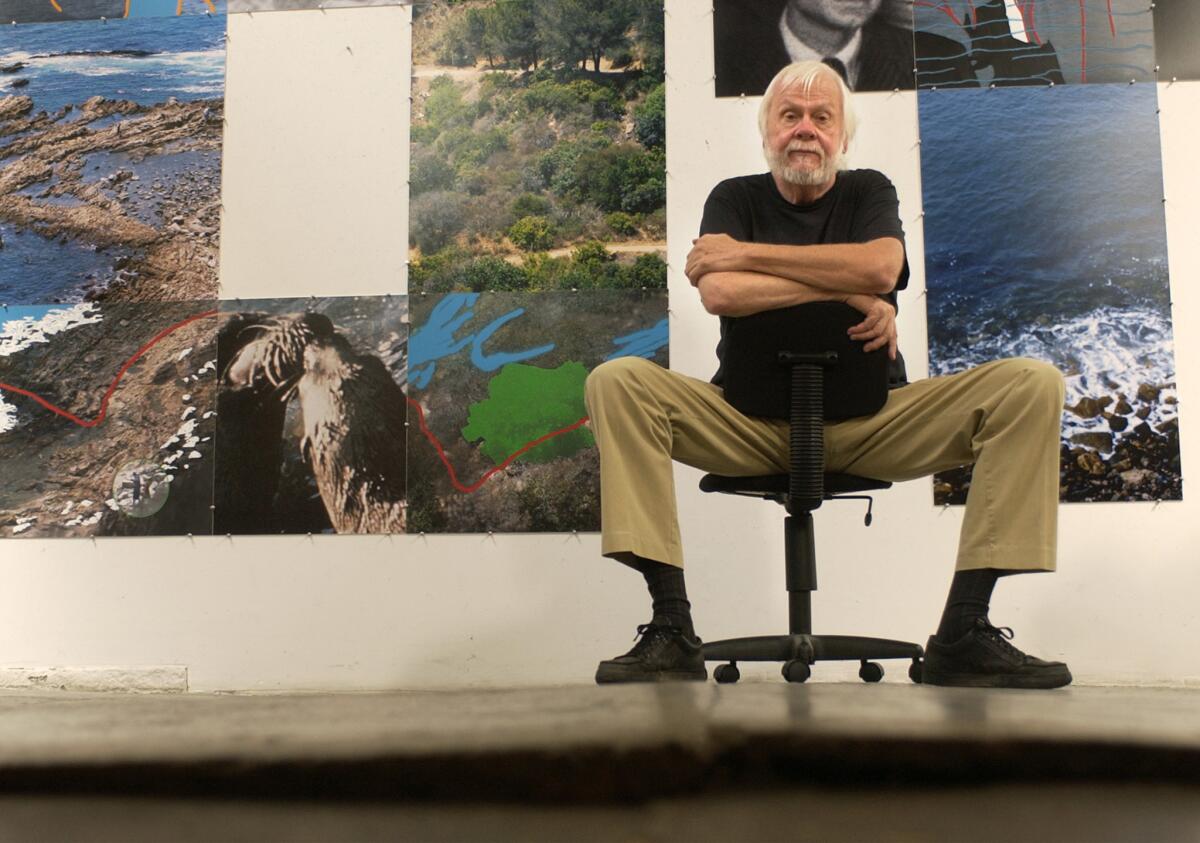
Generosity of spirit is a hallmark of Baldessari’s work. It formed the scaffolding for his famous 1971 pledge to never again make any boring art. Why visit tedium on an audience?
“WHAT WOULD Picasso do?”
That’s a question that artist John Baldessari asked a few years ago, in his typically sardonic, deceptively simple way. He asked it in the manner that he asked a lot of questions over the course of his long life, by making it a work of art: Plain black letters are stamp-printed on a small white card, a bit of writing whose words prompt speculative pictures to form in your mind.
Artists are canaries in the culture’s coal mines, sensitive to otherwise imperceptible shifts in social posture and gaping voids in consciousness. Art is soft power, exerting its persistent force in a harsh and indifferent world where hard power reigns.
For most of 2020, I have found myself wondering something similar. The Picasso question implies the need to respond to a predicament, and the year has been choked with those. Over and over, as the months rolled by and the sorrows grew, I wondered: What would Baldessari do? READ FULL STORY
By MARK SWED
Classical Music Critic

Black Lives Matter has, of course, made systemic change a nationwide issue. But systemic has to mean systemic. Change can’t coddle quick-change artists.
LAST MONTH, architect Frank Gehry and Los Angeles Philharmonic CEO Chad Smith gave me a masked hard-hat tour of the nearly finished Judith and Thomas L. Beckmen YOLA Center at Inglewood. Gehry’s reimagining of an abandoned bank building may not be able to satisfy all the demands for systemic change that have been directed toward classical music privilege. But it just may be the single most heartening start.
The YOLA Center, which is intended to serve music students from Inglewood and surrounding communities, is neither something lost nor something found during our disastrous year with coronavirus. Youth Orchestra Los Angeles is, instead, Gustavo Dudamel’s educational initiative begun in 2007, shortly after he was appointed music director of the L.A. Phil. Over the years, a program that started with 80 students has grown to 1,300 and led to exceptional institutional and individual successes that are now a model for orchestras everywhere. READ FULL STORY
By CHARLES McNULTY
Theater Critic
If theater has an inherent edge in proximity, film and television have the advantage in reach.
FOR MUCH OF 2020, the theater has been accessible only by screen. This is like experiencing the cold through a picture of a snowman. It’s obviously not the same thing. But in a year of manifold losses, plays and musicals have found ways not simply to survive but also to thrive in new mediums.
The Broadway productions of “Hamilton” and “What the Constitution Means to Me” reemerged as films that give a wider audience the best seats in the house. These are stage performances filmed and edited to preserve as much theatrical dynamism as possible.
Director Thomas Kail, who staged “Hamilton” on Broadway, captures on-screen how Lin-Manuel Miranda’s hip-hop-infused musical moves. The film, released by Disney+, allows us to feel the pulse of the original Broadway cast, with camera angles that slide from actor to audience view. READ FULL STORY
By LORRAINE ALI
TV Critic
I’d lost touch with Marshall nearly 25 years ago. ... He was a barkeep and live-in caretaker at the American Legion Hollywood Post 43. ... He now apparently haunts the place.
What have I gained during the COVID-19 pandemic, aside from weight and a new appreciation for grocery delivery services?
The knowledge of what happened to someone I cared for dearly, yet lost track of, someone whose memory I’d lost until he returned to me as a ghost, courtesy of paranormal TV.
No doubt, cabin fever has driven me mad, but I swear this redemptive tale of trash TV is true. In the Before Times, work was so hectic that I didn’t have time to watch anything but new, shiny prestige TV series for review or write about the endless stream of political controversies playing out on our screens. Then came the first safer-at-home order, which meant sheltering in a cramped home with my gangly teenage son, work-at-home husband, two lovable, clumsy pit bulls and one prickly, harder-to-love cat. By the time summer rolled around, we didn’t just need to retreat from the virus outside, we also needed space from one another. More and more time was spent in separate rooms — watching TV, of course. READ FULL STORY
By CAROLINA MIRANDA
Arts and Urban Design Columnist
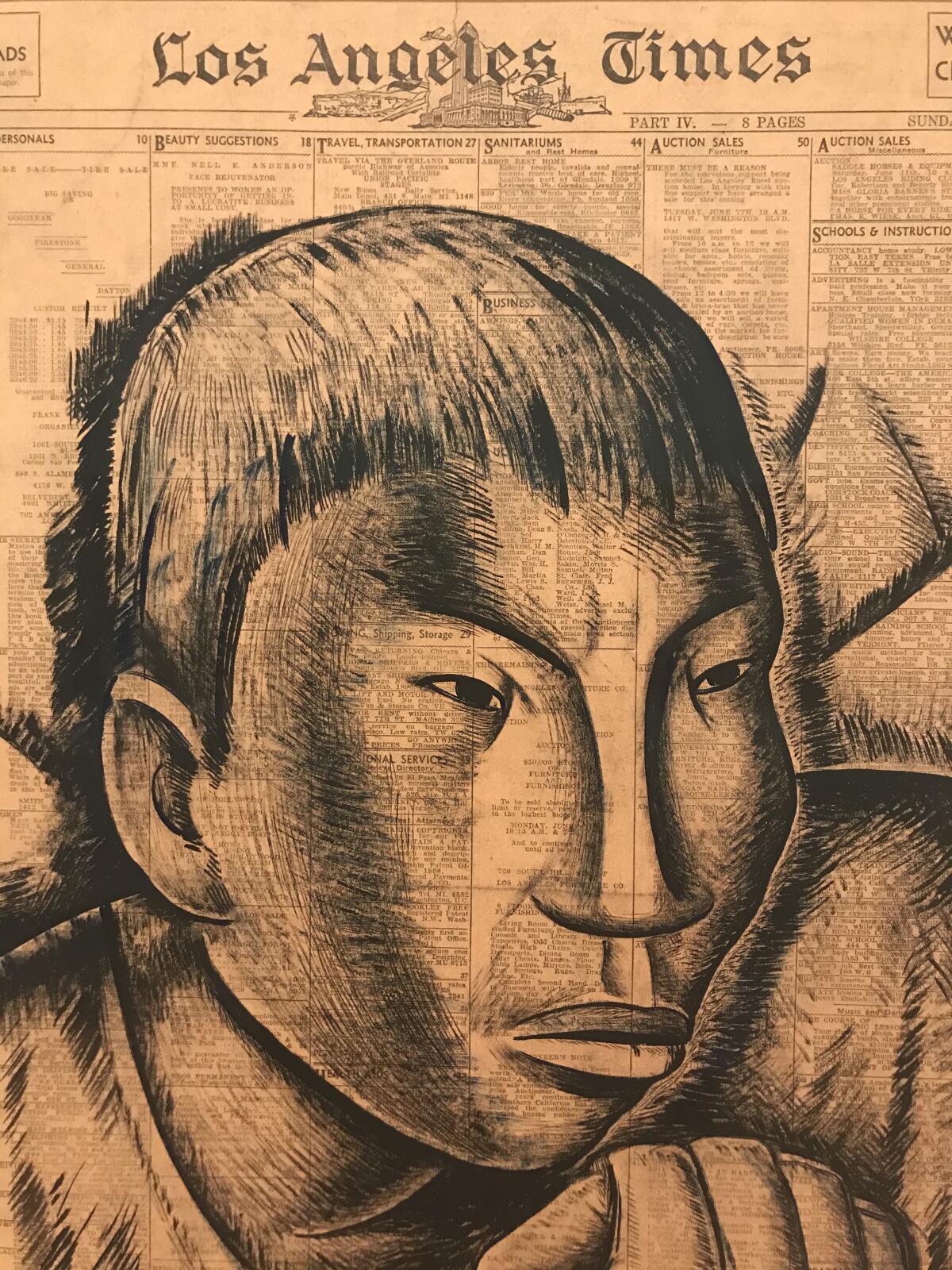
The arrival of “Vida Americana” amid a national election ... forces self examination, since to admire 20th century American painting is also to admire its Mexican influences.
THERE IS perhaps no more satisfying sendoff to the xenophobia of the Trump era than an exhibition that rewrites American art history and, in the process, makes it more Mexican.
That exhibition is “Vida Americana: Mexican Muralists Remake American Art, 1925-1945,” which opened at New York’s Whitney Museum in February and, one pandemic later, has miraculously managed to remain on view. The show takes some of the most recognizable U.S. painters of the first half of the 20th century and meticulously documents the ways in which those artists were indelibly shaped by the politics and aesthetics of the Mexican mural movement.
Jackson Pollock. Philip Guston. Jacob Lawrence. Thomas Hart Benton. Ben Shahn. Charles White. The list of artists influenced by the Mexicans reads like a literal who’s who of American painting. READ FULL STORY
By TODD MARTENS
Game Critic
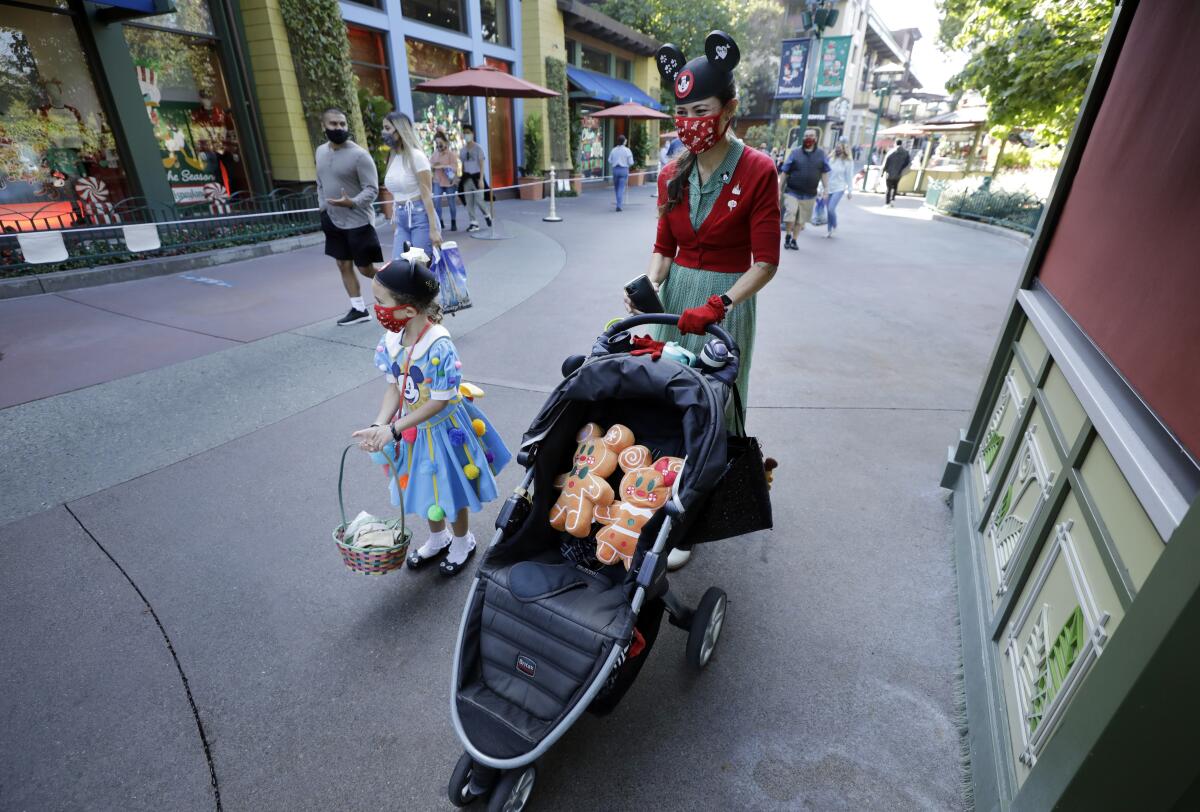
Any momentary solace ... was replaced the next day with a sense of sadness, the realization that the parks are being used in ways they’re not intended — as a mall.
ON THANKSGIVING, I made a decision that was in direct opposition to what my gut instincts told me to do: I went to the Disneyland Resort to dine at Disney California Adventure....
In times of stress, anxiety and depression — and 2020 has been all of that and more for so many of us — it’s often comforting to visit a familiar place, a place that can reassure us that we’re still a part of a broader community, and a place that can take our mind off of reality, if even for a brief moment.
I’ve long tapped Disneyland to fill that role. More than a simple theme park, Disneyland for Southern California and beyond is on par with the region’s finest, more stereotypically art-minded institutions, a reflection of American Pop art that is at once frozen in time and in constant evolution. READ FULL STORY
By ROBERT LLOYD
TV Critic
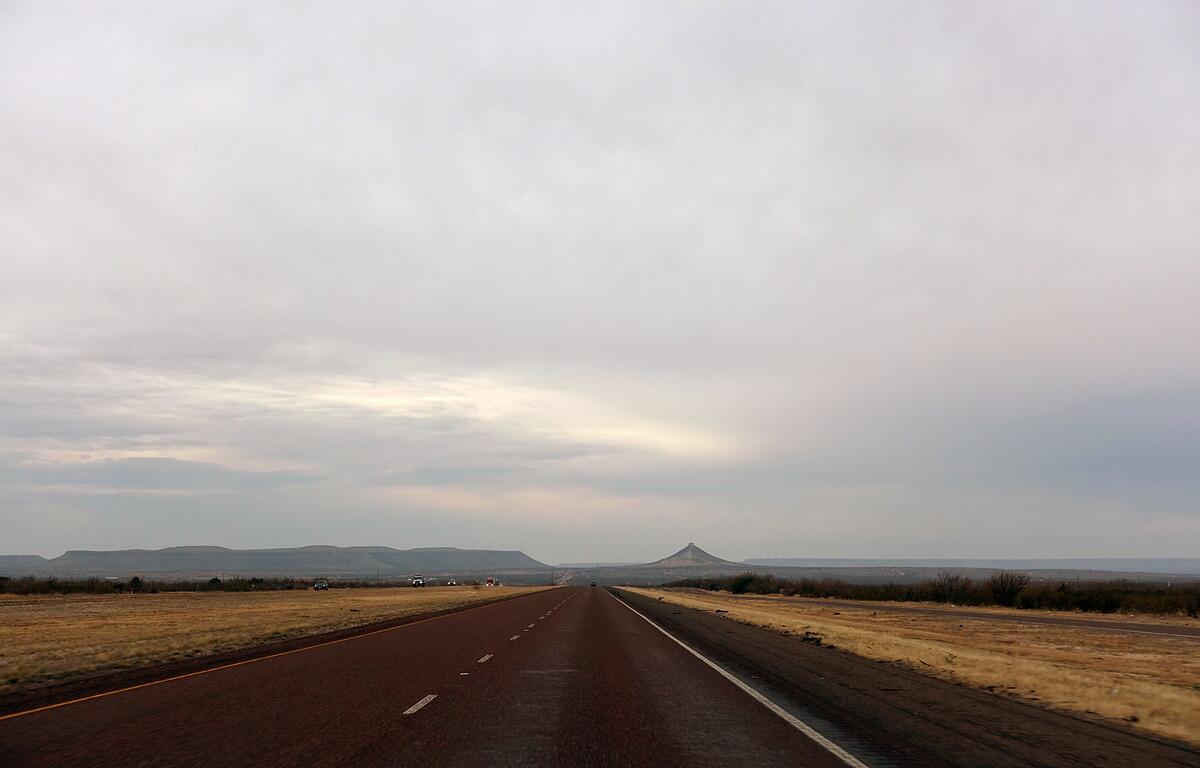
Movement is historically, for better and for worse, the American way ... baked into our romanticized notions of freedom — the whole awful enterprise of “America” bullying its way from sea to shining sea.
I SPENT MUCH of the first months of 2020 driving around America, before spending almost every day of the next 10 sitting right here. The occasion was a reunion tour with a singer-songwriter I accompanied through the 1990s and into the early 21st century, the artist formerly known as John Wesley Harding and now by his own name, Wesley Stace. As my Twitter bio says, “L.A. Times TV Critic. Sometime sideman.” This was that sometime.
It seemed a mad thing to be going out driving in the dead of winter, when there was every chance of sleet and snow to stay us in our appointed rounds. I could tell you stories: New York to Boston, 1996; Cleveland, 2001; Fourth of July Pass, 2002. The nearest I have ever been to death is in a moving vehicle on tour. ... Yet, except for a few bad hours in Nebraska, crawling along in the tracks of semis as the road disappeared under a blanket of white, we were lucky with the weather — and doubly lucky in that, having not waited for warmer days, we managed to finish the tour just before everything shut down. READ FULL STORY
By AUGUST BROWN
Staff Writer
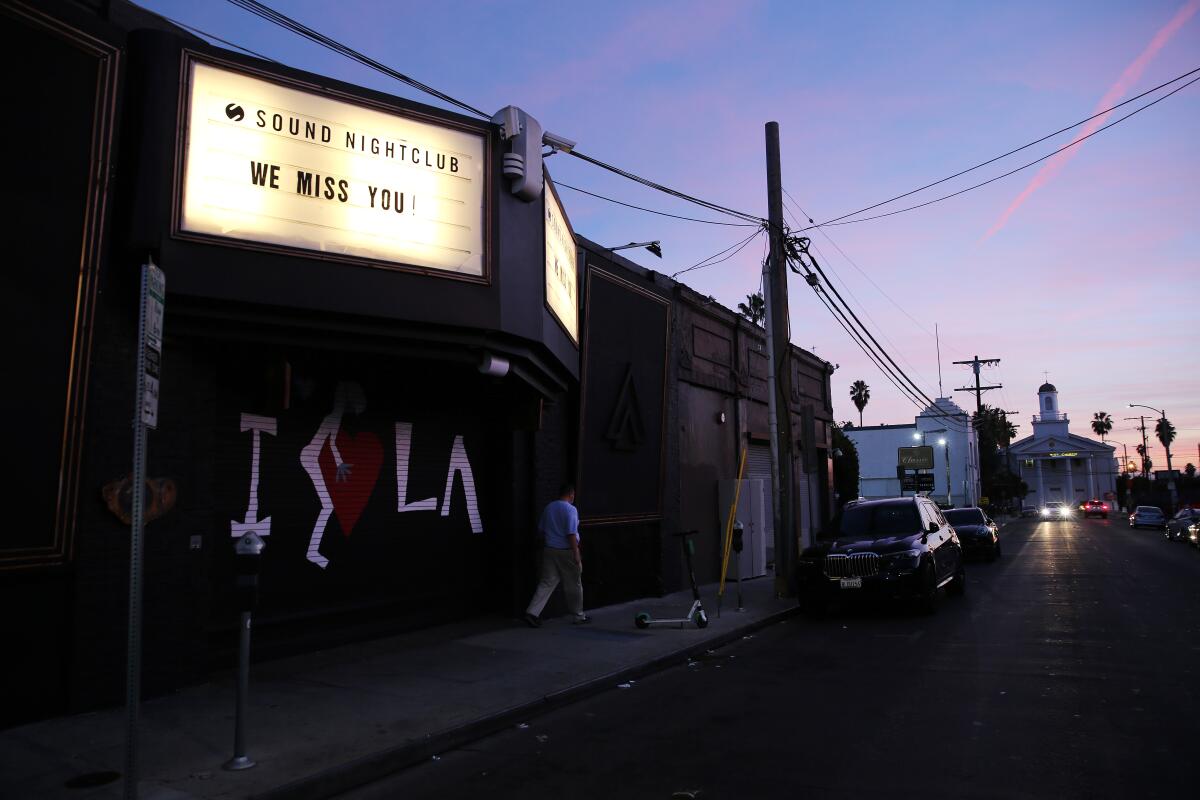
It’s always a hard way to make a living, and now it seems almost impossible.
— Singer-songwriter Inara George
BACK IN LATE February, when COVID-19 was an ominous but still-uncertain threat, Megan James held out hope for a big year on tour.
Purity Ring, her L.A.-based electronic duo, had locked an April 3 release for its third LP, “Womb.” It had gone five years between albums and ached to hit the road with new material. The duo had booked a June hometown show at the 4,000-capacity Hollywood Palladium, with a global tour to follow.
But the band got nervous as South by Southwest, then Coachella, announced postponements. Should it push things back? Maybe this would all be over in a few weeks?
It wasn’t.
“Everyone feels like the ground was just taken from beneath them,” James said from her home in L.A. where she’s barely gone outside for close to a year. ... “Everyone has their own degrees of despair. ... I didn’t imagine last year I’d be thinking about leaving L.A. But where do we go?” READ FULL STORY
By RYAN FAUGHNDER, MEG JAMES, ANOUSHA SAKOUI
Staff Writers
This is going to forever change how we look at the movie business. It’s the biggest thing to happen to the movie industry in my lifetime.
— Blumhouse founder Jason Blum
HOLLYWOOD IS experiencing another massive disruption today as a result of the COVID-19 pandemic.
Titans of the entertainment and media business posted huge losses, with more pain to come. Industry-rattling trends that were expected to play out over multiple years — including the shift of movies from theaters to streaming services — have instead happened over the course of a few months.
Warner Bros. parent WarnerMedia on Thursday added rocket fuel to an inferno of disruption when it said the company will release all of its 2021 films on HBO Max the same day they hit theaters. That’s 17 movies — including some potential blockbusters — that are going to the $15-a-month streamer at no additional charge, in a bold effort to grow HBO Max. Executives insist it’s a temporary move, but many in Hollywood believe that the industry will never be able to go back to the old ways. READ FULL STORY
By HILLARY KELLY
There’s something unfashionable about admitting that novels offer lessons in how to live, but who cares? We all know that’s one of their manifold pleasures.
HAS ANYONE checked on the debut novelists to make sure they’re all right? Amid a devastating pandemic, a steep recession and an attention-sucking black hole of a presidential election, authors that might otherwise have been amply rewarded for timeless brilliance were overlooked even in the casualty count. Publications and culture sites focused on politics, not prose. Visits to brick-and-mortar bookstores dwindled. Overworked printers reserved their rush orders for presidential memoirs. And a lot of smart, important, moving literature was lost in the chaos. Here are 10 books — memoirs, short stories, novels, essays — that deserved our attention and our readership in 2020; give them some in 2021. READ FULL STORY
Movie theaters closed. Broadway went dark. Concert venues fell silent.
The biggest entertainment stories
Get our big stories about Hollywood, film, television, music, arts, culture and more right in your inbox as soon as they publish.
You may occasionally receive promotional content from the Los Angeles Times.